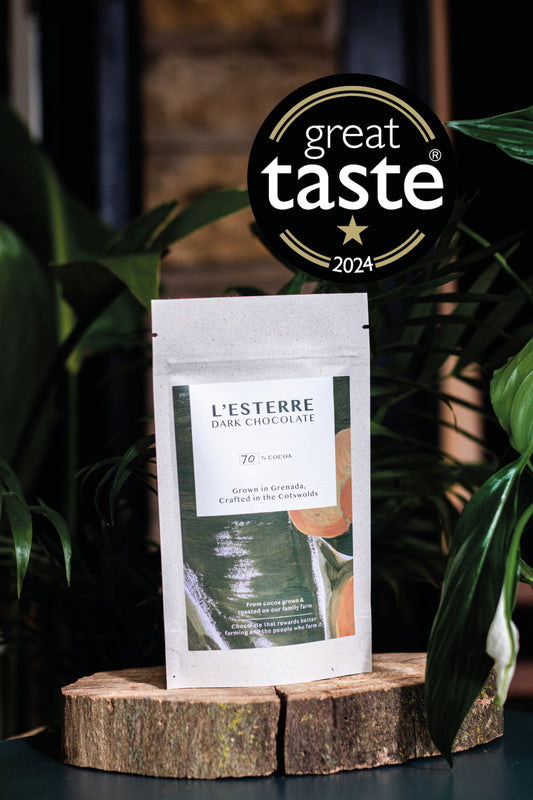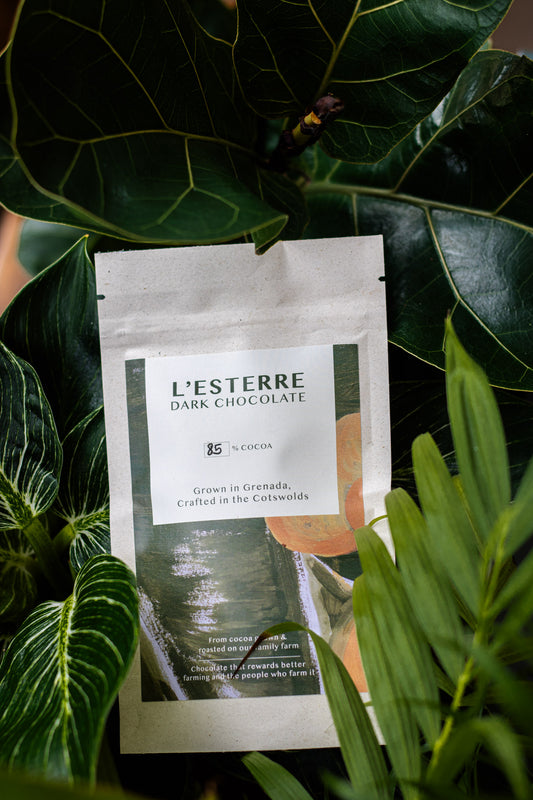
Consider this my personal ode to nutmeg and mace. Ever since returning to London earlier in the spring, spices have been my everyday. These tiny souvenirs of home always inject colour to my day, an unparalleled depth to my culinary exploits, —and not so culinary exploits in the kitchen.
Yes, once you start to nutmeg. You always nutmeg.
What is life without spice? A life that’s lacking if you ask me. This guide takes you through nutmeg and mace; the spices we grow on the estate. From understanding the post-harvest process right down to storage and preparation, with a few meal suggestions thrown in there of course. Plus links to recipes, resources, and a few spice blends to get you started.

On Nutmeg
1st grade, cracked
As you probably guessed, these nutmegs are the cream of the crop in quality and appearance. But mostly appearance, because we’re all about looks these days. Meaning they don’t have any cracks, and that shrivelled appearance you might see on supermarket shelves. ‘Cracked’ or unshelled nutmegs means the nutmeg has been removed from its outer protective shell. Some nutmegs may look more ‘plump’ than others and vary in size, but that’s just nature doing its thing—nothing is meant to be uniform.
Post-harvest: The process of drying nutmeg is a delicate procedure in itself. If they’re too dry, they shrivel and lose their oil content which means they're less aromatic and flavourful. At the same time, you don’t want it too moist to encourage mould to develop. Because they dry in the shell, you have to be pretty expert to know when they’ve dried sufficiently, so we go by a set amount of days, though it is also weather dependent. Once sufficiently dried, they’re taken to a cracking machine; essentially a mechanical hammer pounding the nutmegs against the wall. The fun really begins when you separate the broken shells from the nutmeg. Which takes what feels like a year and a day. Nutmeg is then graded on its appearance. The broken or cracked nutmegs are usually made into nutmeg powder or oil
Storage: A clean glass jar with an air-tight lid. I always keep a couple in a small bowl on my kitchen counter, which makes me use it more regularly than salt.
Preparation: You could get a special nutmeg grater, though I would advocate a Microplane— a much more even and delicate sprinkling. Conventional graters usually have a small nutmeg grater on them but I find them irritating and awkward to use. Avoid grinding nutmeg into a powder unless you’re using it straight away as once ground, it loses its aroma and potency. Nutmeg can be added during the cooking process itself for a subtler taste, but I like to use it right at the end so the full potency is still intact.
Eat with: muesli, overnight oats, granola, thick plain yoghurt, hot buttered sourdough (my favourite), split pea stew, any savoury stew, porridge, rice pudding, broccoli, any cheese or creamy dish, pumpkin & spinach.

On Mace
Blades, 2nd grade
The sister spice of nutmeg is mace, because it is found in the same fruit. Mace snugly covers the nutmeg seed, an electric red waxy coating, as though a reassuring layer, protecting the precious nutmeg seed from any harm. Unsurprisingly mace has a similar aroma to nutmeg, though a little milder and sweeter.
Mace is also graded; 1st grade means the entire web of mace is still intact when it’s removed from the shell. 2nd grade is decided purely on aesthetics, this just means the entire web of mace couldn’t be extracted from the seed in one go, instead coming off in pieces; into what we call ‘blades’.
Once harvested, preparing mace is an even more delicate procedure than nutmeg. As far as possible, the entire web is extracted from the shell. It is then cleaned by hand on trays and dried both indoors and outdoors. Mace transforms from an electric red to deep yellowy flames whilst it dries.
Storage: Like nutmeg, a clean air-tight glass jar is best.
Preparation: To use mace frequently, ground into a powder with a spice blender or mortar and pestle. Though reserve a few blades for pickling and infusions if that’s your vibe too.
Eat with: in homemade curry powder, granola, pickling veg (goes with bay leaf), fish dishes, béchamel sauce—the building blocks of any cheesy dish, apple tart, particularly good with pumpkin, sweet potatoes, cauliflower cheese, fish pie & mushrooms.
_______________________________
Resources and recommendations
Equipment
-
Spice Blender (also doubles as a coffee grinder)
Recipes
-
Lasagne: Sage & squash or nutmeg & spinach
-
Killer bechemel sauce by Delia. Of course.
-
Nutmeg chocolate chip cookies. Add 1/2 nutmeg & cocoa nibs
-
Nigella Lawson loves mace. Check out her mace recipes here. Particularly the Crab Mac N’ Cheese
Books
-
The Grammar of Spice, Caz Hildebrand
-
Contemporary French Cuisine, Olivier Roellinger
-
Cook, Eat, Repeat by Nigella Lawson.
Spice Blends (from The Grammar of Spice)
-
Curry Powder | 2 tsp cumin seeds, 2 tbsp coriander seeds, 1 tsp fenugreek seeds, 1/2 tsp black peppercorns, 2-3 mace blades, 1/4 nutmeg, 1 tsp ginger, 1 tsp turmeric
Heat a heavy-based frying pan over a medium heat. Add all the whole spices and toast for 2-4 minutes, until fragrant, stirring occasionally. Leave to cool, then grind to a powder in a spice grinder. Stir in the chilli powder, turmeric and ginger. Will keep in an airtight container for 2 months.
-
Chesapeake Bay Seasoning | 6 tbsp celery salt, 2 tsp sweet paprika, 1 tsp dried red chilli flakes, 1 tsp mustard powder, 1 tsp ground black pepper, 1 tsp ground allspice, 1 tsp ground ginger, 1 tsp ground bay leaves, 1/2 tsp ground white pepper, 1/2 tsp grated nutmeg, 1/2 tsp ground mace, 1/2 tsp ground cardamom
Mix all the ingredients together and store in an airtight container for up to a month. A distinctive yellow, great in fish dishes like clam chowder and fried chicken.
-
Jerk Seasoning | 1 tbsp black peppercorns, 2 tsp allspice berries, 1 small cinnamon stick, 1 tsp freshly grated nutmeg, 1 tsp dried thyme, 1/2 tsp cayenne pepper, 1/2 tsp dried chilli flakes, 1/2 tsp salt.
Heat a small, heavy-based frying pan over medium heat. Add the black peppercorns, allspice berries and cinnamon stick and toast for 2-4 minutes until fragrant, stirring occasionally. Leave to cool, then place in a spice grinder with all the remaining ingredients and grind as finely as possible. Store in an airtight container for up to 2 months.
-
Speculaas | 2 tbsp ground cinnamon, 2 tsp freshly grated nutmeg, 2 tsp ground cloves, 2 tsp ground ginger, 1 tsp ground white pepper, 1 tsp ground anise, 1/2 tsp ground cardamom.
Mix all the spices together. Store in an airtight container for up to 6 weeks. Sweet and aromatic, use this for decorative biscuits and pastries.



